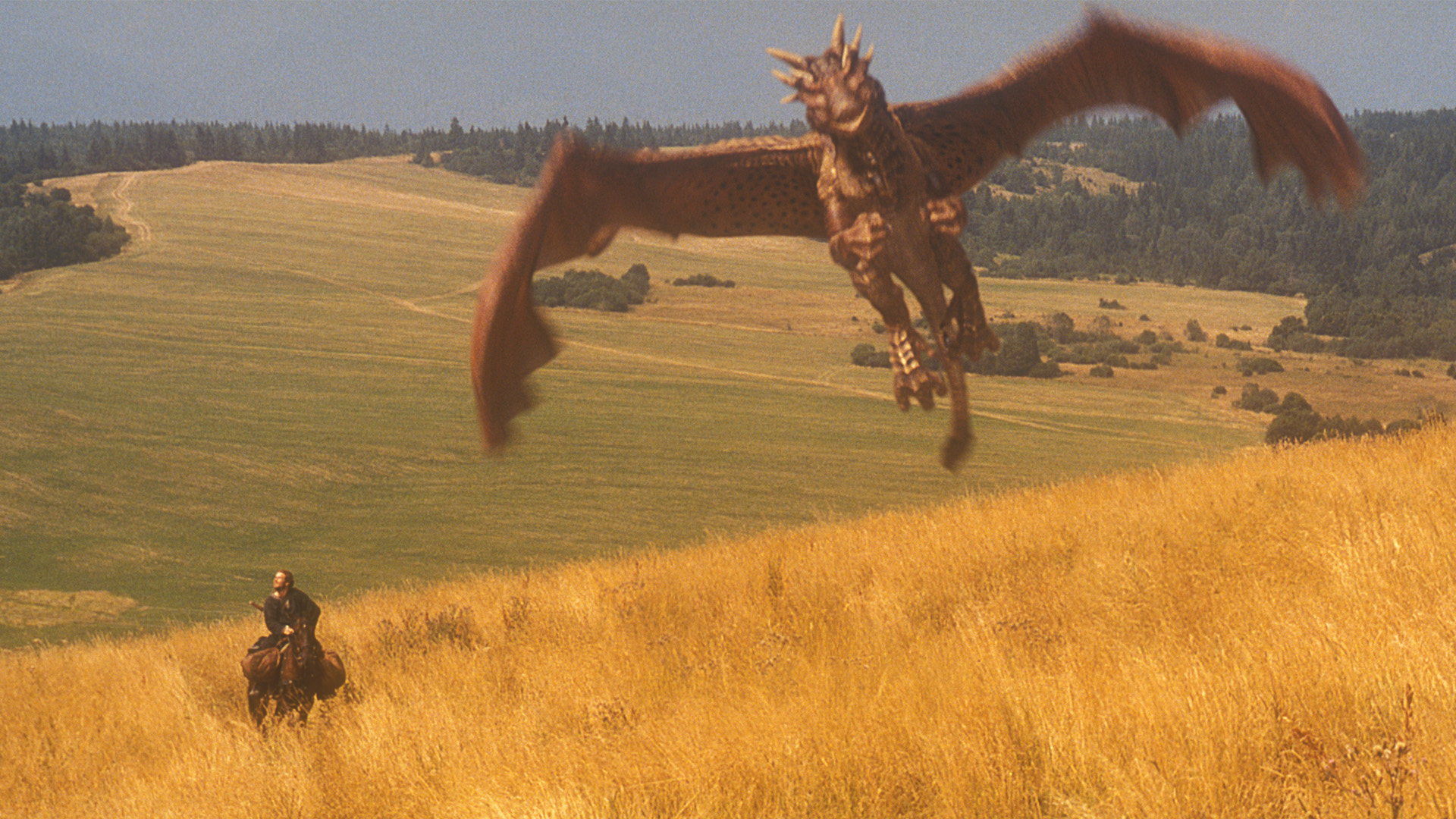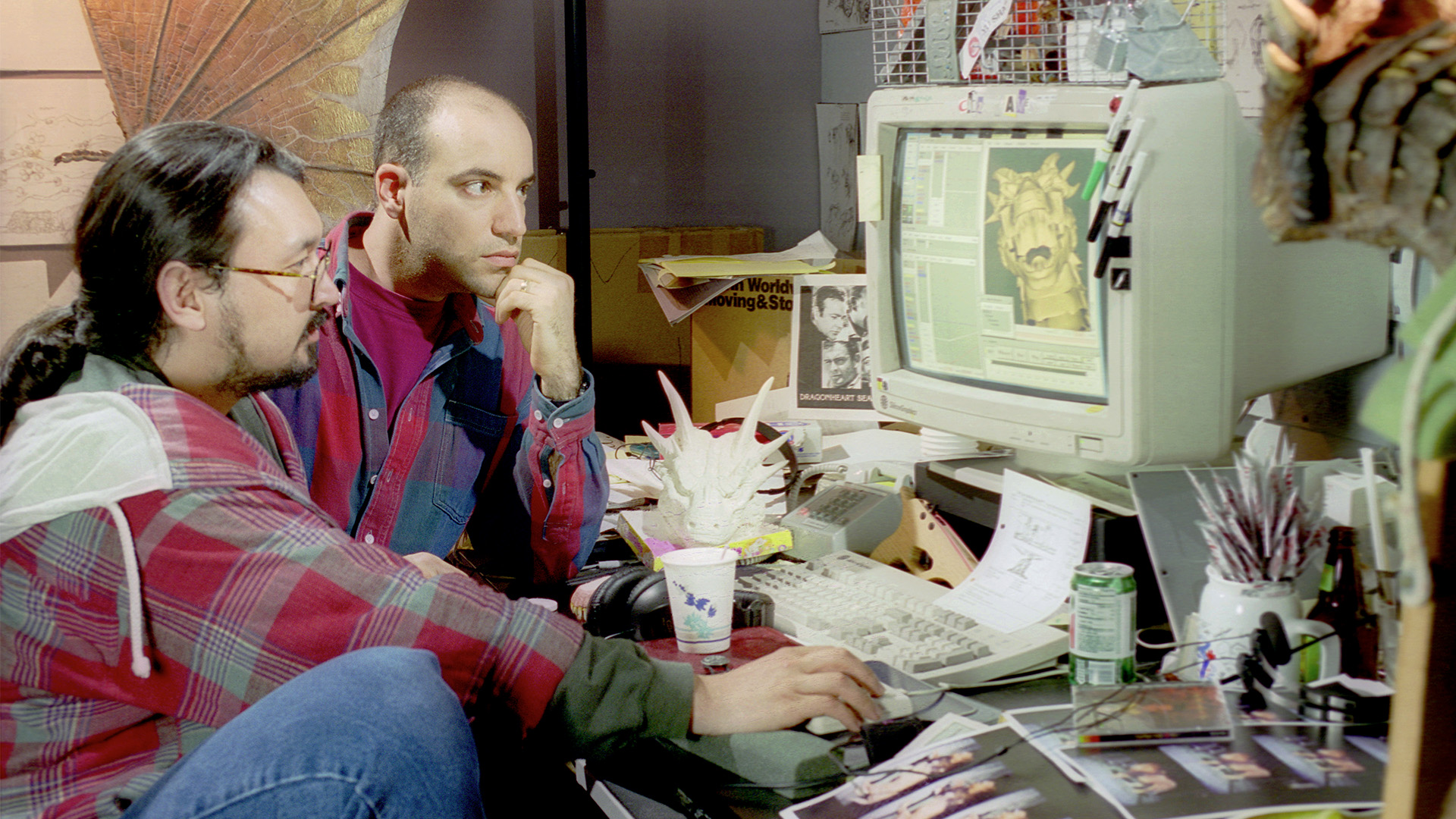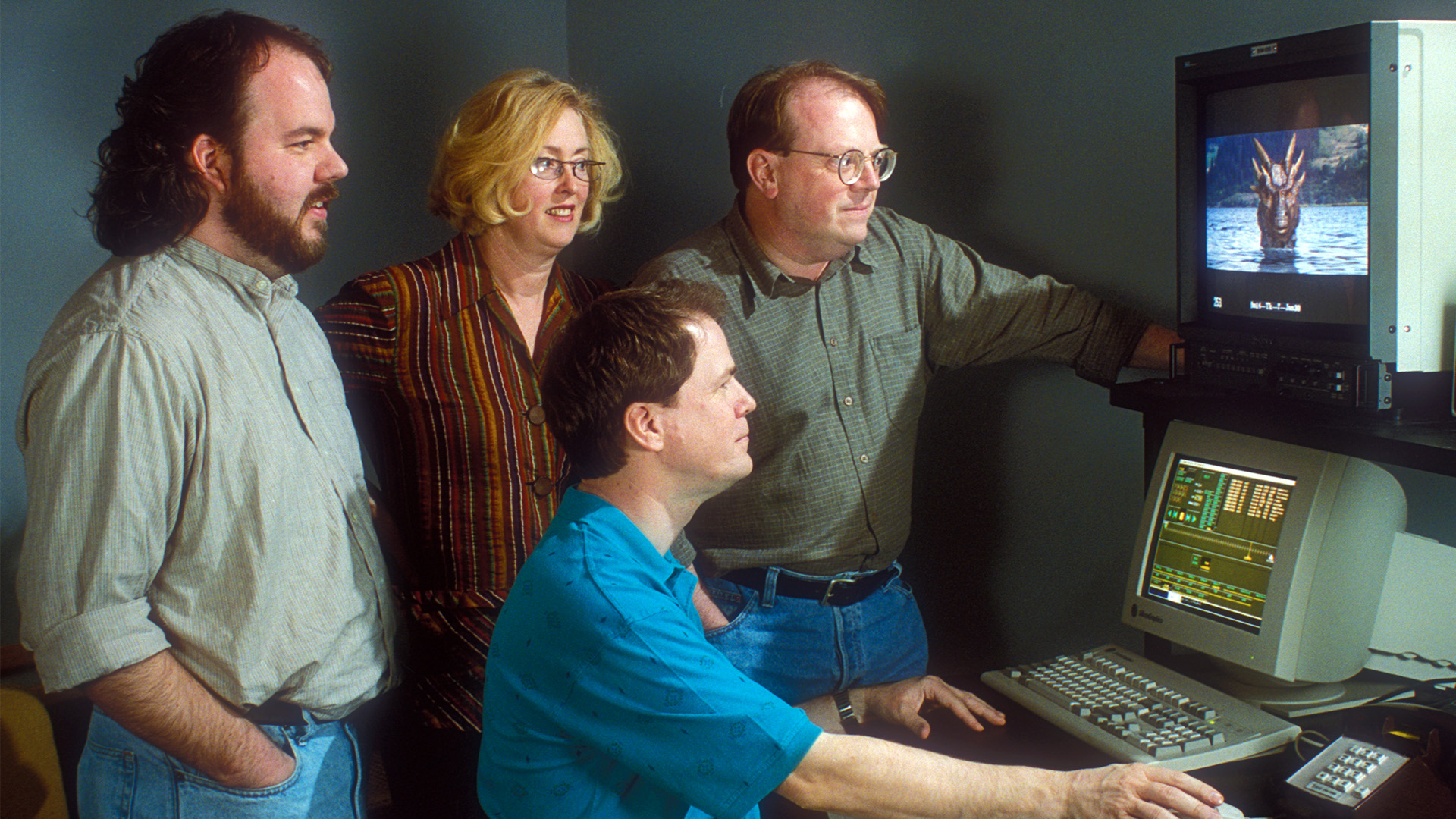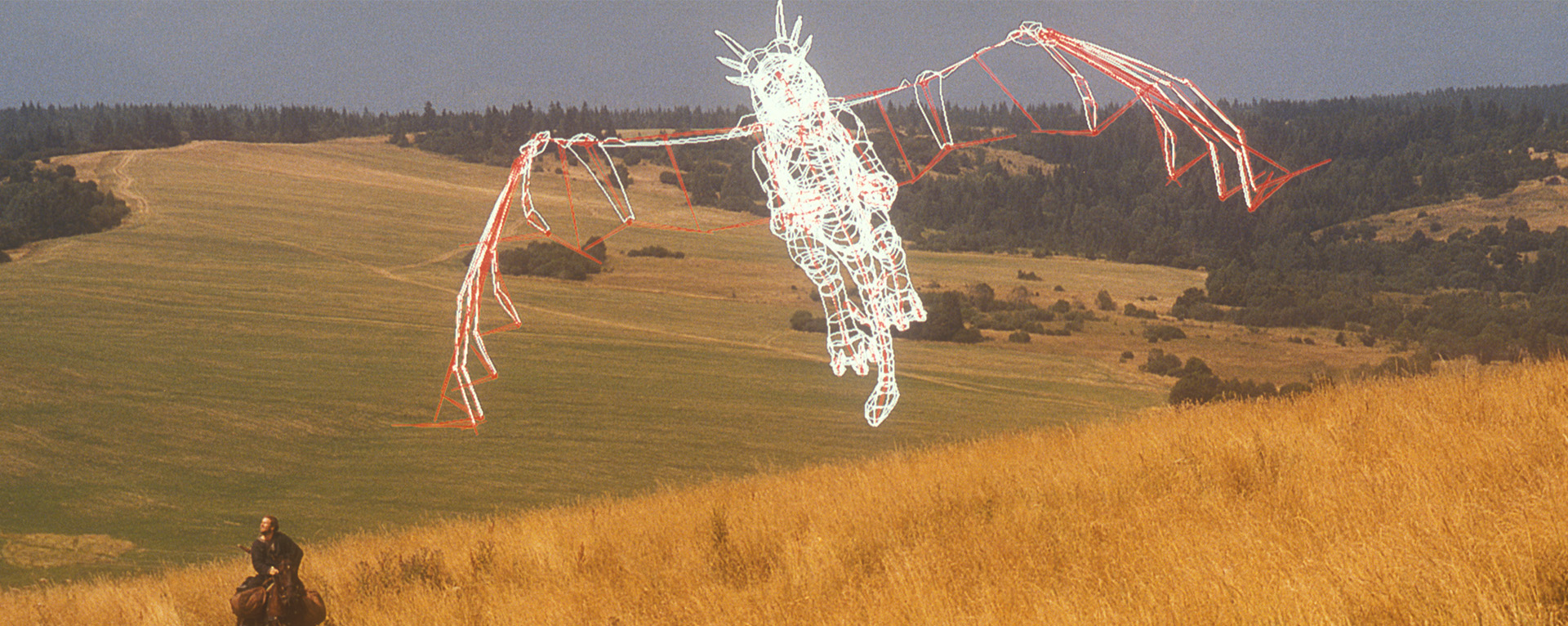The Digital Road to The Phantom Menace: Character Animation in Dragonheart
ILM’s new software ‘Caricature’ helped unlock one of the most important keys to the digital renaissance in visual effects.
“The Digital Road to The Phantom Menace” is a Lucasfilm.com series that explores Industrial Light & Magic’s work in pioneering digital visual effects, and specifically how advancements on projects throughout the 1990s became essential tools for creating Star Wars: The Phantom Menace. The most ambitious visual effects project ever undertaken up to that time, the film is now celebrating its 25th anniversary.
Today, we often think of digital visual effects in terms of iconic characters who have been brought to life with computer graphics tools. This has been a core element of the innovations pioneered at Industrial Light & Magic (ILM) from the beginning, with characters like the stained-glass knight in Young Sherlock Holmes (1985), the pseudopod in The Abyss (1989), the T-1000 in Terminator 2: Judgment Day (1991), and of course, Jurassic Park’s (1993) dinosaurs.
In the wake of Jurassic Park, projects with digital visual effects surged within ILM, each requiring new breakthroughs in software and technique to achieve specific goals. When director Rob Cohen brought Dragonheart (1996) to the company, the ILM team knew it presented a distinct challenge, one that would prove to have a lasting impact. It was the first time a realistic-looking, non-cartoon CG character would have a starring role in a major motion picture, and the first to be voiced by a major Hollywood star.
A fantasy adventure about a down-and-out knight (played by Dennis Quaid) who forms an unlikely partnership with a cantankerous dragon named Draco (voiced by Sean Connery), Dragonheart required a fully-CG creature who could speak with the depth and emotion of a leading dramatic character. The necessary detail and nuance in Draco’s performance posed a distinct challenge.

“James Straus was the animation supervisor and Scott Squires was the visual effects supervisor,” explains Rob Coleman, a Dragonheart animator who today is the creative director of ILM’s Sydney studio. “They took the T-Rex head from Jurassic and put a whole bunch of shapes on it, like a smile, a lip curl, and phonemes for ‘A-E-I-O-U,’ and James animated a proof-of-concept for Rob Cohen. Based on that, ILM got the contract, but it was going to be so time-consuming that we never would have got the movie done with the existing tools, which is why we needed a new in-house facial system.”
Now one of ILM’s directors of research and development, Cary Phillips was a newly-hired software engineer in 1994. Inspired by computer graphics while studying engineering at the University of Pennsylvania, he moved to California to work at Pacific Data Images before joining ILM. Phillips was soon asked to help on Dragonheart.
At the time, ILM was busy with character animation for Universal’s Casper (1995) with tools that were quite “primitive and archaic” in terms of their facial system, as Phillips notes. Animators would hand-type individual text files to load specific facial shapes into a given shot. Those text commands would instruct the software how to pose the character over the course of a given take. “It was computer animation that was essentially like stop motion animation,” says Phillips, “and there was no way that we could do Dragonheart the way we had done Casper.
“[Pre-production supervisor] Alex Seiden showed me a mock-up of what he thought the interface of a facial animation system ought to look like,” Phillips continues. “There was a window with a face and another window with different expressions, and each one had a slider with a timeline. I looked at it and almost immediately understood what we needed to do.”
At the time, Softimage was the leading application for CG animation, the first system of its kind to be “animator-driven and interactive,” Phillips says. “It was powerful but it was slow, or it was only fast if the models were simple. It was all based on wire-frame. Never could you see a shaded model. It also didn’t have a plug-in interface, unlike how things work today. You couldn’t extend it in any way.” Phillips did not think it was possible to animate Draco’s facial expressions with Softimage. Instead, he would build a new tool himself.
The workflow was relatively simple: animators would create the character’s body movements in Softimage as they had done before with a traditional wireframe view. But then, they’d save the file out and open it in a new program that Phillips dubbed ‘Caricature’, which depicted only the character’s face with a visible skin surface. “It was like animating a mask for the character,” says Phillips. “It was a specially-built program. It shows you a face and lets you interact with it.”
The result was a game changer for ILM’s animators, who began calling the program “Cari” for short, as a double reference to both its name and its creator (something Phillips didn’t originally intend). “The head of Draco had the same amount of points in its topology as the entire T-Rex three years earlier,” says Rob Coleman. “To move that kind of data, typically, you’d have to move a shape and wait 30 seconds for the computer to recalculate everything. Then it would update and you’d look at it and maybe you pushed it too far or not far enough, so you’d move it again. You were animating lines and it was horrendous. So when Cari showed up, suddenly we had real-time, digital sliders. You could go from a neutral face to a happy face or a sad face, or I could just do an eye blink or a cheek puff, or a sneer. We had lots and lots of shapes.
“This was groundbreaking because suddenly you could turn off the rest of the dragon, just have the face up on your screen, and craft all of the expressions,” Coleman continues. “One of my shots was Draco saying ‘I am the last one!’ You could hear Sean Connery’s voice and accent saying ‘lasht’ and I was looking in the mirror trying to find that mouth shape. You’d key frame the animation, watch it, and modify it. We could do more iterations per day and per week, which made our work so much better than what it had been before.”

As work progressed, Phillips became embedded with the ILM artists in order to garner feedback. Among them was CG modeler Paul Giacoppo, another recent hire who joined a group of four responsible for sculpting Draco’s body and helping create the key expressions which the animators could then pose. “I had tons of pictures of Sean Connery and we wanted to imbue his personality into the character,” says Giacoppo. “One of the challenges was the expressiveness of Connery’s eyebrows. He is stolid looking but he can also be very expressive and emotional. You can see his eyebrows moving and his charming way of talking out the side of his mouth. Cari allowed us to make a shape to make the mouth smile, and then you could slide it to one side or the other.”
The result was something different from anything ILM had achieved before. As Coleman explains, “ILM had done the T-1000, which is remarkable, but I think he only has one line as a liquid metal guy, when he’s in the helicopter and he says ‘Get out.’ It’s impressive and technically astounding, as is the water snake in The Abyss, but those characters didn’t have to act in this kind of way. To have an emoting, acting digital character sharing the screen with people like Julie Christie and Dennis Quaid was a huge ask. ILM was up for it as ILM always is, but as animators, we’d never been tested this way before. We’d never been asked to hold the audience’s attention and have them believe that this voice was coming out of that dragon.”
About a year after the film’s release, it was Coleman who would show George Lucas scenes from Dragonheart along with other recent examples of their work. “He stood there as I showed him the results of Caricature,” Coleman explains. “I learned later that it was in that meeting that George decided that ILM was ready to take on the digital characters for The Phantom Menace. He had been waiting for ILM’s technology and artistry to reach a certain point, because he knew that he wanted some characters to be made with computer graphics. He didn’t want to be tied down to animatronics and puppetry. He wanted digital characters interacting with live actors in a way that he never had in the original trilogy.”
On subsequent projects, the ILM crew wasted no time in improving the capability of their tools. Soon, animators could see a character’s entire body in relation to the face they were animating. New “Cari Renders” allowed for near-instant playback of rough animation. After ILM software developer Jim Hourihan created a new modeling tool, iSculpt, he and Phillips combined it with Caricature in order to create a system that allowed artists to both sculpt a model, dial in its movements, and animate them all in the same program. They also pioneered a technique called model correctives, a tool within Caricature that allowed artists to manually fix imperfections in 3D geometry, “like 3D-Photoshop,” as Giacoppo puts it.
ILM honed these new techniques on projects like Mars Attacks! (1996), The Lost World (1997), Men in Black (1997), and Flubber (1997). Each formed a stepping stone towards The Phantom Menace. “Episode I was really about taking stuff that we had and bringing it up to a level that could sustain the volume and scale of the movie,” Phillips explains. “Maybe it fits into George Lucas’ whole vision because he had seen evidence that these things were possible. From our perspective, we had done those things, but not at the scale that he wanted. It was terrifying. The shots had a new level of complexity. We had to reinvent and reimplement the tools to do so.”

Between Jar Jar Binks, Boss Nass, Watto, and Sebulba, The Phantom Menace had a cohort of digital co-stars, not to mention countless supporting and background digital characters. Each of ILM’s innovations in visual effects were made in the service of the story that filmmakers were trying to tell, and in The Phantom Menace, the digital characters carried significant weight. Their believability and success heralded a new era in filmmaking with original characters impossible to depict with other methods.
Much of this success is dependent on the effective collaboration between scientists and artists, and Phillips embodies that essential virtue. “To this day, I’ve never met anyone like Cary,” says Giacoppo. “Before Dragonheart, I was used to people who simply said, ‘Here’s the program, and here’s how it works.’ But Cary would say, ‘Try this program and let me know how it works.’ So I’d give him feedback and he’d say things like, ‘Yeah, it’s not very smart, is it? I don’t think it’s working intelligently. Let me go back and make it smarter.’ He presented his work in terms of ‘show me how this can be better.’ And he was showing you something that was amazing, something that no one else was doing at that time. He always had this energy and positive attitude. He was so smart in figuring things out. We’d give him a problem and he’d come back with a creative solution.”
Ultimately, the techniques in Caricature were integrated into ILM’s current Zeno system in the 2000s. Looking back, the software’s legacy has an unusual place in a modern visual effects landscape that is increasingly complex. “Caricature was a system with very clear inputs and a very clear, constrained purpose,” he says. “Things are so complicated now. Artists constantly deal with something that’s broken and have to troubleshoot. They go on Odysseys trying to unravel why something isn’t working right. Caricature was simpler. It was reliable, and if something went wrong, it was clear how to fix it. That’s something I treasure looking back on it.”
The digital renaissance of the 1990s seems to have been almost a unique time for this sort of breakthrough. “It was a golden era of innovation in computer graphics because it was a time when advances in hardware and academic research had outpaced the tools that were available, especially for feature films,” Phillips concludes. “So the pickings were good. It was an opportunity to connect what the computer could do to what artists wanted.”
In 1998, The Academy of Motion Pictures Arts and Sciences honored Cary Phillips with a Technical Achievement Award for the design and development of the ILM Caricature Animation System recognizing the innovation and how it has contributed in significant and lasting ways to motion pictures.
Lucasfilm | Timeless stories. Innovative storytelling.

